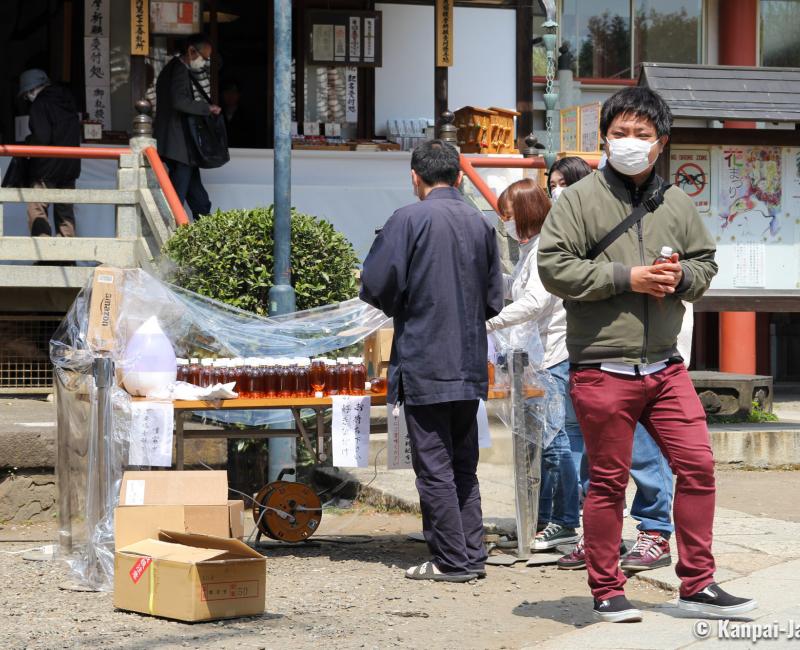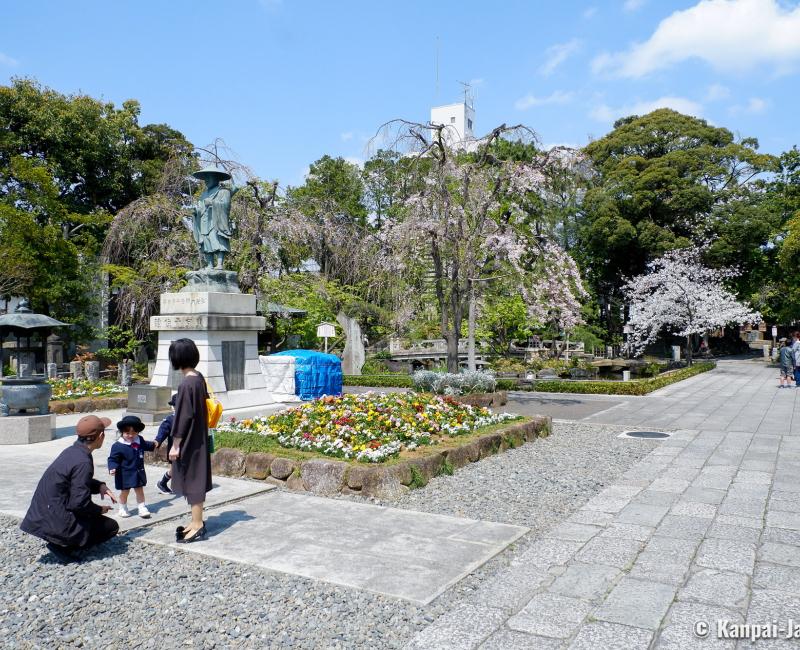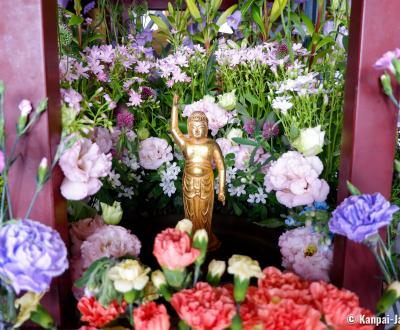Hana Matsuri
The Flower Festival for Buddha’s Birthday
Hana Matsuri (or Kanbutsue) is a festival held on April 8 each year in most of Japan’s Buddhist temples to celebrate the birth of the historical Buddha. Of a religious background, this observance is largely ignored by tourists smitten with the viewing of the cherry blossoms in spring.
Hana Matsuri is a religious event celebrated throughout Buddhist Asia, and of course, in Japan as well. The celebration of the birthday of the historical Buddha Shakyamuni traditionally took place on the 8th day of the 4th month of the lunar calendar, which makes it happen on a variable date from late April to early June nowadays.
In Japan, the date was established on April 8 during Meiji Era (1868 – 1912) after the adoption of the Gregorian calendar. The name Hana Matsuri (花祭り), meaning "Flower Festival", is said to date back to the early 20th century and was chosen to show the coincidence of this date with the sakura 🌸 full season in Kanto area, as cherry blossom was considered THE flower par excellence. The celebration is also generally named Kanbutsue (灌仏会, literally "Buddha bathing party").
Unlike Japan where the celebration is rather confidential, this date is a holiday, and even a national celebration in many Buddhist countries, such as South Korea or Taiwan, where the event is celebrated with magnificence.

Kanbutsue: celebrating Buddha’s birth
Hana Matsuri is held in most of Buddhist temples in Japan, except those related to the Nichiren school. The custom was imported from China in the 7th century by the Imperial Court, and quickly spread to the population. Nowadays, many Japanese have forgotten this tradition, all the more as they are not the occasion of exuberant parties and colorful parades like Shinto festivals.
For the D-Day, a small aedicule, named hana-mido (花御堂, "flowers pavilion") is placed in front of one of the temple’s important hall. The hana-mido shelters a statuette standing in a large shallow bowl and is covered and surrounded with flowers.
The statuette is a representation of Shakyamuni, as he appeared at birth (tanjo butsu zo 誕生仏像 "statue of Buddha at birth"), namely in the form of a miniature adult, standing, the left hand towards the ground, the right hand towards the sky to symbolize the unicity of the world. The bowl is filled with ama-cha (甘茶) that the worshippers pour on the statue’s head with a ladle.
This act means to reproduce Shakyamuni’s first bath: on his birth day, the child was purified by a sweet rain ☔️ triggered by eight great dragon kings, or the 9-headed dragon Kuzuryu, depending of the legends’ many versions.
Ama-cha, contrary to what its name suggests, is not exactly a sweet tea. It is an infusion made from leaves of a specific hydrangea species, with a strong sugary taste. After using the liquid to sprinkle the statuette, worshippers can also drink it, or come back home with a small bottle offered by the temple. Ama-cha is said to have insecticide and anti-allergic properties, and to help improve one’s calligraphy skills when using it to prepare the ink.
Shakyamuni’s legend tells that he was born in a field of flowers, hence their accumulation to honor him, but also that a white elephant appeared in his mother’s dreams at the time of his conception, and that is why this animal is frequently represented in the temples for Kanbutsue.
Hana Matsuri is initially a celebration of Buddha, but became over time synonym of the advent of spring and an additional occasion to pray for young children’s health, who are frequently associated with the celebration.

Where to attend to Hana Matsuri festival in Japan?
Finding a place to celebrate Buddha’s birth is easy anywhere in Japan. The Kanbutsue festival on April 8 can vary according to temples and regions. They nonetheless all begin with a specific Buddhist religious ceremony. Then, worshippers of all ages line up to pour ama-cha on the statuette and pray all day long. Some temples organize parades with children donning historical costumes (chigo gyôretsu 稚児行列).
In Tokyo
- In Gokoku-ji temple near Ikebukuro, young children cladded in flamboyant historical costumes pour ama-cha on the statuette to beckon divine protection.
- In Senso-ji temple in Asakusa, a gilded hana-mido shelters a tiny statue and is exhibited along with a white elephant statue.
- Tsukiji Hongan-ji temple in Tsukiji, in addition to its baroque architecture, displays on its forecourt a white elephant, and families with children can settle here for a giant picnic.
In Osaka
- In Shitenno-ji temple: the Buddhist ceremony in front of the hana-mido placed in the center of the temple’s grounds begins at 10:30 a.m., then worshippers come one after the other to sprinkle the statuette. Another ceremony takes place in the beginning of the afternoon, for which it is possible to offer flowers (paid offering to book in advance).
In Kyoto
- In Nishi Hongan-ji temple, near Kyoto station.
- In Mibu-dera temple, near Shijo, children parade and pull a float decorated with a white elephant.
- Shinkyogoku shotengai shopping arcades near Teramachi start the festivities in the beginning of the afternoon with giveaways of sweets, Buddhist ceremony and parade.
Some temples are renowned for their Hana Matsuri, such as Chikurin-ji in Kochi on Shikoku Island. Others, like Kosen-ji temple in Kusatsu, have their Hana Matsuri on May 8.
Hana Matsuri is sometimes celebrated at the same time as other festivals or commemorations whose dates are close, such as Daibutsu no hi (大仏の日, "Day of the Great Buddha statue") on April 9 celebrating the "inauguration" of the Great Buddha sculpture of Todai-ji in Nara in the 8th century.

